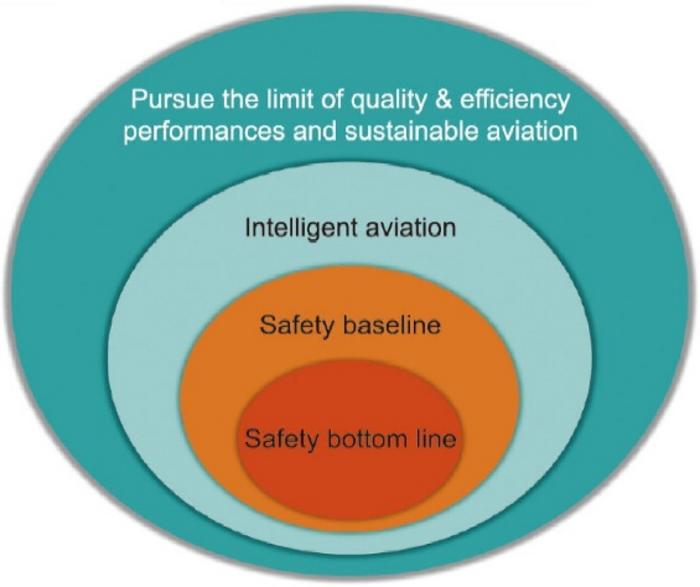
In recent developments within aviation safety, a groundbreaking perspective based on the system-of-systems (SoS) model has been introduced, addressing the complex challenges inherent in the next generation of civil aviation transportation systems (CATS). This concept was detailed in a review paper published in the esteemed journal Engineering, signifying a vital evolution in our understanding of safety management in the face of rapidly changing air traffic dynamics and technological advancements. The authors, led by Daqing Li, articulate how the escalation in air traffic complexity necessitates a re-evaluation of traditional safety measures and risk management strategies.
As aviation continues to grow, it transforms into a multifaceted cyber-physical-social system that brings with it an array of new risks associated with emergent scenarios, such as urban air mobility (UAM) and the integration of innovative technologies. This paradigm shift is crucial as it recognizes that modern CATS systems are no longer isolated entities but rather interconnected networks where interactions can give rise to unforeseen safety challenges. Therefore, establishing a robust safety management framework is essential to navigate this complex landscape.
The authors detail how aviation safety has evolved through four distinct generations, each marked by varying driving factors and improvements in safety protocols. However, they emphasize that the introduction of new technologies often induces a temporary decline in safety performance due to unpredictability and adjustment periods. Understanding this dynamic is critical for stakeholders as they seek to implement new technologies while ensuring the safety of operations.
In analyzing the complexity of aviation-related risks, the research identifies three primary aspects: emergence, diversity, and conflict. Risks emerge from the intricate interactions within the system and manifest in numerous forms, including human, machine, information, and management-related risks. The fluid nature of these systems also enhances the likelihood of risk propagation, leading to safety management conflicts that require sophisticated approaches to detect and mitigate.
To combat these multifarious challenges, the concept of SoS safety is proposed, drawing inspiration from the human immune system. This innovative approach comprises three core elements: safety capability, safety logic, and safety architecture. Safety capabilities encompass critical functions such as risk perception, mitigation, and elimination—essentially the ability to identify potential problems and respond effectively. Elements like global awareness, collaborative orientation, intelligent decision-making, and agile response are integral to building these capabilities.
Safety logic introduces a three-line defense mechanism targeting numerous dimensions of risk. Designed to effectively manage known and unknown risks, the concept prioritizes awareness and preparedness for both observable and latent threats. The objective is to cultivate an environment where safety knowledge is not only reactive but also proactive, anticipating potential challenges before they manifest.
Furthermore, the safety architecture envisioned in this paper is modeled as a hypernetwork structure, which includes various interconnected safety networks. This design enables a more integrated approach to safety, combining a fundamental safety network with collaboration and decision networks, fostering a holistic understanding of safety operations. To support the implementation of this SoS approach, key technologies such as model-based systems engineering (MBSE), digital engineering, and parallel management are explored, highlighting the necessity for advanced techniques to analyze and manage risk effectively.
The development of SoS safety is anticipated to unfold across three crucial phases. Initially, the focus will be on resilience management at the operational level, augmenting current safety management practices. As the framework matures, safety capabilities will expand to the design phase, allowing for more versatile adaptations to emerging risks. Finally, as urban air mobility and mixed operational contexts become prevalent, the ultimate goal of SoS safety will be to harmonize design and operation processes, facilitating a comprehensive approach to risk mitigation in an increasingly complex environment.
This proposed SoS safety paradigm signifies a transformative shift in how safety is perceived within complex systems, moving from isolated safety management practices to a more integrated and capability-focused approach. While the concept is primarily illustrated through the lens of civil aviation, its applications extend beyond, offering insights for other large-scale complex systems across various sectors. Future research initiatives are urged to verify this framework through empirical testing and digital engineering, particularly as new operational paradigms like low-altitude operations and urban air mobility continue to emerge.
In conclusion, the integration of the SoS safety concept into aviation not only addresses the current challenges but also sets a foundation for future advancements. It encourages a shift towards a proactive, integrated safety culture that anticipates and mitigates risks through comprehensive knowledge and awareness. Ultimately, while the physical airspace may be boundless, the evolution of safety management within it must also be limitless, adapting continually to ensure the safety and reliability of future aviation systems.
Subject of Research: System-of-systems safety in civil aviation
Article Title: Next Frontiers of Aviation Safety: System-of-Systems Safety
News Publication Date: 18-Jan-2025
Web References: https://doi.org/10.1016/j.eng.2025.01.002
References: Li, D., Yao, A., et al. (2025). “Next Frontiers of Aviation Safety: System-of-Systems Safety.” Engineering.
Image Credits: Credit: Daqing Li et al.
Keywords
Aviation, Adaptive evolution, Air traffic, Complex adaptive systems, Immune system
Tags: advancements in aviation safety protocolsaviation safety management evolutioncomplex air traffic dynamicscyber-physical-social systems in aviationemergent safety scenarios in aviationinterconnected aviation networksnext generation civil aviation transportation systemsrisk management strategies in aviationsafety framework for aviation systemssystem-of-systems approach in aviationtransformative changes in aviation safetyurban air mobility safety challenges





